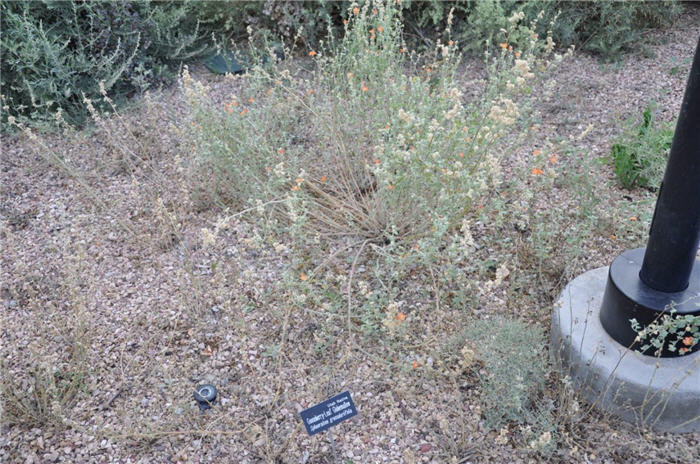| Botanical Name: Sphaeralcea grossulariifolia | |
| Common Name: Gooseberry-leafed Globemallow |

-
Anatomy
-
Culture
-
Design
Plant Type
Perennial
Height Range
1-3'
Flower Color
Orange
Flower Season
Summer
Leaf Color
Grey Green, Grey, White
Bark Color
n/a
Fruit Color
Brown
Fruit Season
Summer, Fall
Sun
Full
Water
Very Low, Low
Growth Rate
Moderate
Soil Type
Sandy, Clay, Rocky
Soil Condition
Average, Poor, Well-drained, Dry
Soil pH
Neutral, Basic
Adverse Factors
Attracts Bees
Design Styles
English Cottage, Meadow, Mediterranean, Ranch
Accenting Features
Showy Flowers, Unusual Foliage
Seasonal Interest
Spring, Summer, Fall
Location Uses
Perennial Border
Special Uses
Erosion Control, Naturalizing
Attracts Wildlife
Hummingbirds
Information by: Stephanie Duer
Photographer:
Photographer:
-
Description
-
Notes
This is a southwest native, and grows in hot, dry open areas. Like other globemallow, it has nearly luminescent orange flowers that bloom in late spring. This species grows to be about 12 to 14 inches, though sometimes it may reach 30 inches in height, and about half as wide. Leaves are deeply cut and quite hairy, giving them a whitish appearance. Sphaeralcea grossulariifolia was named Sida grossulariaefolia by William Jackson Hooker and George Arnot in 1838 from a collection made by members of the Hudson Bay Company in Idaho in 1837. Per Axel Rydberg gave the present name in 1913.
Grow in well drained soil in full sun; grows in poor, rocky, or shallow soils. Very drought tolerant. Cut back in late winter.